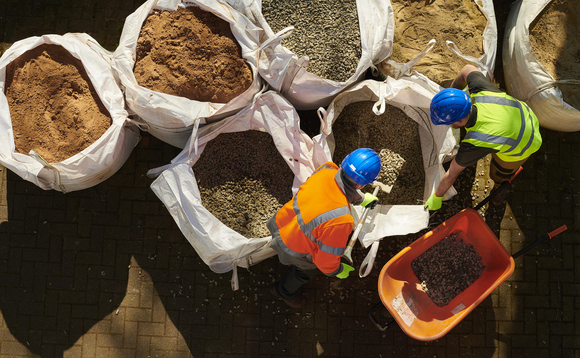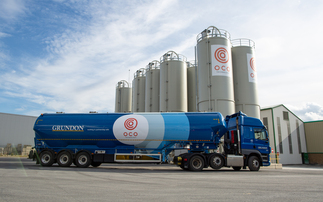Credit: iStock
Tweaking aggregates production in construction and mining industries could permanently trap higher proportion of CO2, researchers claim
Around 0.5 per cent of global carbon emissions could be safely captured by tweaking the way in which rocks are crushed to make aggregates for use in mining and construction, scientific research has claimed.
More than 50 billion tonnes of rock is crushed every year worldwide in sectors such as mining and construction, which currently account for around 11 per cent of global carbon emissions, but current crushing processes do not capture CO2.
However, a new paper published this week in the journal Nature Sustainability assesses the potential of using CO2 gas to crush rocks to make aggregate materials, which it explains holds the potential to trap some of the carbon dioxide within the rocks through the process.
The method can trap a proportion of the CO2 in a stable, soluble form, and the resulting rock powders can then be harnessed for a variety of uses, such as construction materials, according to the study, which was led by researchers at the University of Strathclyde in Glasgow.
Moreover, it adds that "almost no additional energy" would be required for the CO2 trapping process, and that it widely adopted across the mining and construction sectors it could trap enough CO2 equivalent to 0.5 per cent of global emissions, which would be roughly the equivalent carbon sequestration impact to planting a forest of mature trees over an area the size of Germany.
Professor Rebecca Lunn, head of the University's civil and environmental engineering department and one of the paper's lead authors, said that by adapting current processes and setups, the method could be used to trap carbon from polluting gas streams such as those from cement manufacturing or gas-fired power stations.
"If the technology was adopted worldwide in aggregate production, it could potentially capture 0.5 per cent of global CO2 emissions - 175 million tonnes of carbon dioxide annually," she said. "Future research can pin this down, as well as optimise the process to trap more carbon."
The global estimate is based on Norway's CO2 emissions and hard rock aggregate production volumes data, and the assumption that the country's construction industry "is fairly typical", according to Lunn.
"Some countries such as Australia and South Africa will actually produce far more, as they have large mining industries and will look to crush and sell the waste rock, while others may be less," she added.
"There are many industries for which there is currently no low carbon solution and this research will allow direct gas capture of CO2 from hard to decarbonise industries, where a solution is not going to exist by 2050," continued Lunn. "In the future, we hope that the rock used in concrete to construct high rise buildings and other infrastructure such as roads, bridges and coastal defences will have undergone this process and trapped CO2, which would otherwise have been released into the atmosphere and contributed to global temperature rise."
Previous experiments have explored trapping carbon into single minerals by using a similar method to that explored in the paper, but this process is unstable and the CO2 dissolves out of the mineral when it is placed in water, according to the authors.
However, while far more investigation is needed, the new process set out in the research holds huge potential, according to report co-author Dr Mark Stillings. "Now we know that CO2 trapping in most hard rock can be done in a lab, we need to optimise the process and push the limits of how much can be trapped through the crushing technique," he said. "We then need to understand how this process can be scaled up from the lab to industry, where it can reduce global CO2 emissions. If this process was applied, the CO2 footprint associated with building houses and public infrastructure could be greatly reduced, helping to meet global objectives to combat climate change."
The research was part-funded by the Engineering and Physical Sciences Research Council (EPSRC), which is part of the government's UK Research and Innovation (UKRI) agency.
Dr Lucy, ESPRC's deputy director for cross council programmes, hailed the "breakthrough research" as "truly revelatory".
"It points to a new process for the construction industry that could significantly reduce global carbon emissions and help us meet our net zero goals," she said.








